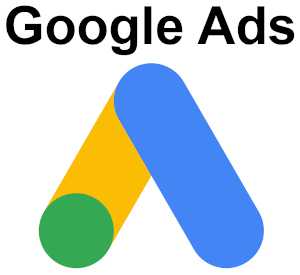How to Create a Google Ads Strategy for Beginners

A Google Ads strategy for beginners starts with defining a few simple goals. Knowing these goals will help with the expectations and results of a campaign.
Possible goals include:
- Using the monthly promotional budget efficiently.
- Defining the target — whether the campaign targets the entire site or part of it.
- Using the best keywords that represent that target.
- Limiting the cost of those keywords, determined by the Ads Keyword Tool.
- Delivering a nearly exact total for the resulting traffic, which is the monthly budget divided by the average cost per click.
- A meaningful return on investment, i.e., profit, increases in audience, etc.
Start with a Small Budget
A newcomer to Google Ads may find that an effective beginning strategy is targeting a small section on the site with a small budget.
Identify the least expensive keywords relevant to that section. Ensure they have some meaningful value to the site’s overall requirements.
The least expensive keywords may not be the most effective, but they are the least risky for someone getting started in Google Ads management. But using this low cost strategy may prove useful for only a few weeks.
It’s important to know that Google Ads has a fairly steep learning curve. Beginners often make a crucial mistake by starting with a large budget and wasting a lot of money on minimal results because they:
- Targeted the wrong keywords
- Bid much higher than necessary
- Wrote an ineffective ad
- Used the wrong landing page for their ad and keywords
- Didn’t use geotargeting or other tactics to increase the campaign effectiveness
- Didn’t revise anything for the sake of improving efficiency
A newcomer who starts with a small budget can create at least two or three text ads with the relevant keywords in the title and/or the body, and then use the keyword tool to choose which keywords the ad will target.
Choose as many as possible, which isn’t the best tactic in the long run, but the reason will be clearer in a moment.
Set a maximum bid for the amount of money you are willing to pay per click. Don’t try to be the top bidder. Place these ads and keywords in an Ad Group.
First Campaign Results
Launch this small test campaign and feel free to look at the activity daily, but wait one week before judging the results in order to get the best data set. Google Ads may need a week to optimize the campaign at its end. Look at three key metrics:
- What is the actual cost per click versus the budget?
- What is the click-through rate for each keyword?
- What is the click-through rate for each ad?
The actual cost per click should not have exceeded the maximum bid when you set up the account, but it might have turned out to be lower. More likely, it will be close to the maximum bid you set.
Click-Through Rates
The click-through rate for each keyword should vary greatly from one to the other. In addition, the volume of keywords may vary greatly as well.
If any keywords have zero volume or no clicks, consider deleting them from the list. If they have few or no impressions, it’s another reason to delete them. But not forever; Google Ads may not be showing them because the bid is too low or the keywords not relevant enough for the ads.
They can be used later for another Ad Group in the campaign. Deleting poor-performing keywords from the Ad Group will increase the overall click rate and possibly decrease the cost per click.
Now look at the click rate for each ad. Google will show that the best performing ad will be displayed more often.
Delete or rewrite the worst-performing ad to improve results.
Continue this A/B testing over time to develop the most effective click rates. Ongoing review, analysis and revision is key to success with AdWords.
Results Via Analytics
Analytics will show if a Google Ads strategy for beginners is effective. Go to the site’s audience software to see what those clicks produced. Anyone using Google Analytics, for example, will be able to view the Visitor Sources section, click on Google Ads and then click on Campaigns to see how the audience behaved.
It is this set of numbers that will determine the return on investment.
Did the campaign visitors consume more, fewer or the same number of page views as other audience sources?
Did they click on an ad, make a purchase or fill out the form? What percentage of the total campaign visitors took the desired action?
This test campaign will introduce you to key concepts that lead to greater optimization of Google Ads.
Once the concepts become second nature, it will be time to expand the current campaign and add new ones. If the return on investment is high enough, it’s also time to expand the budget.


 Promise Media offers online business tips and best practices for content-rich websites.
Promise Media offers online business tips and best practices for content-rich websites.